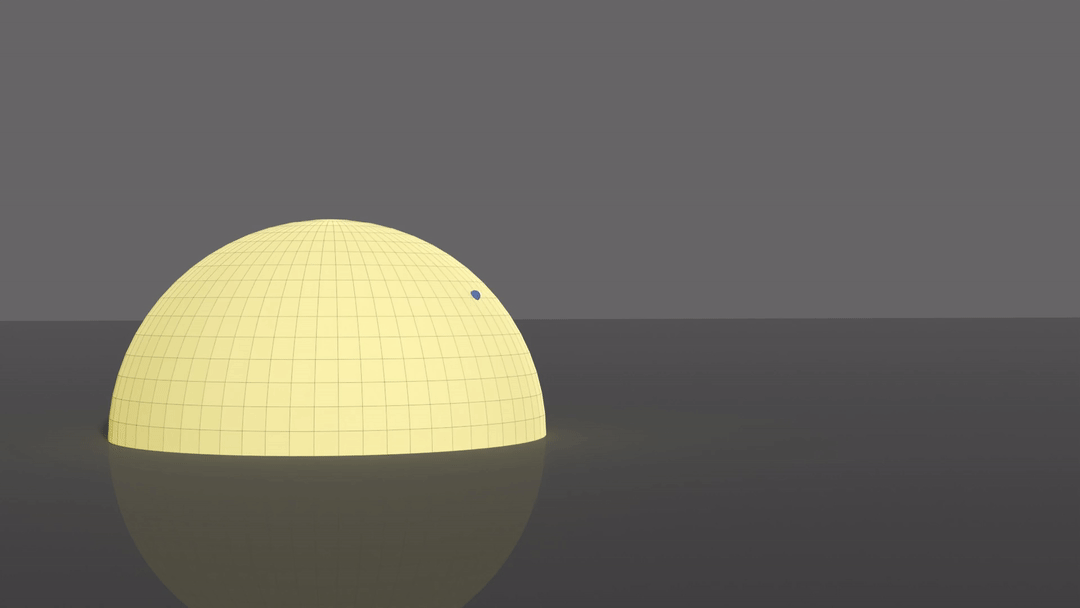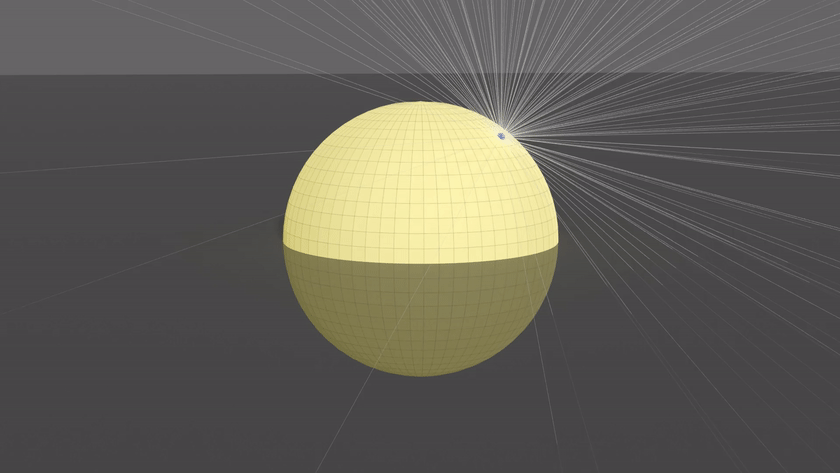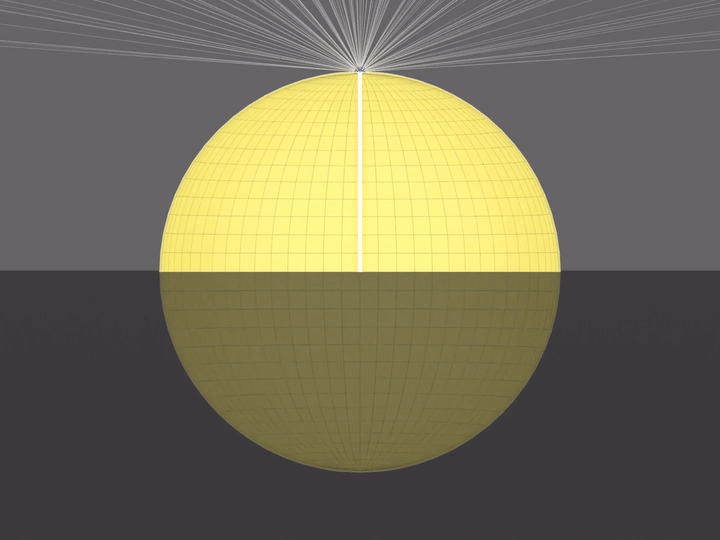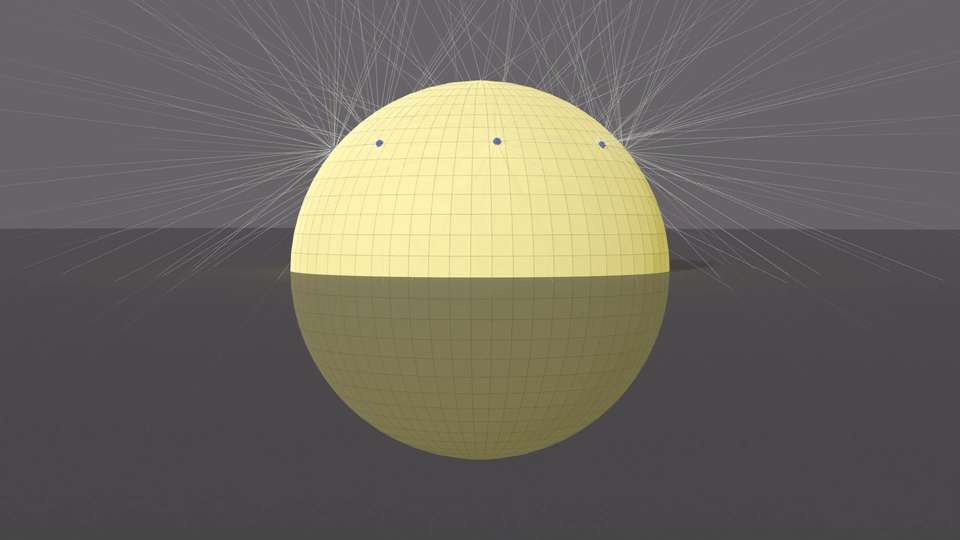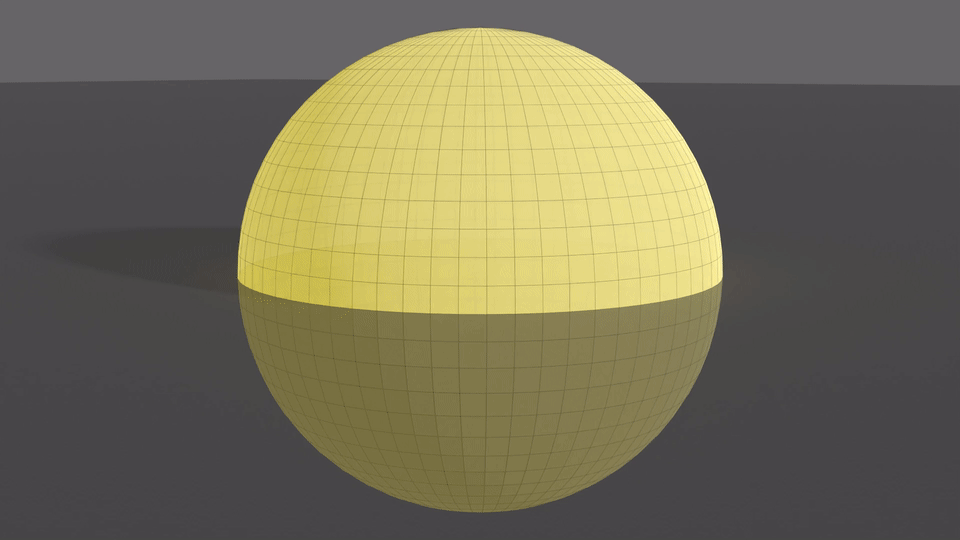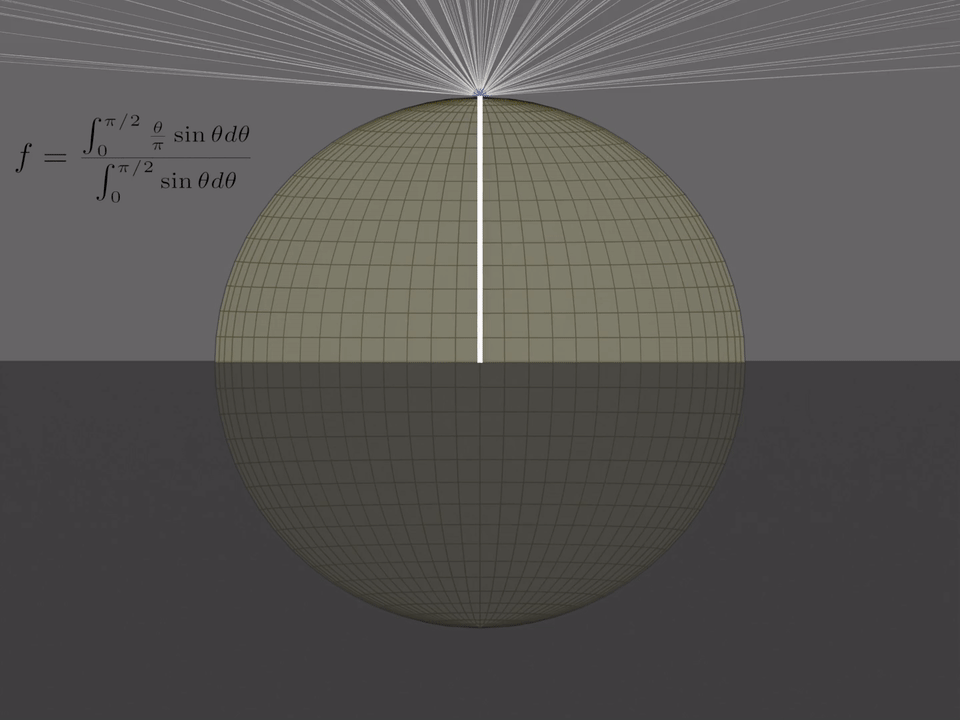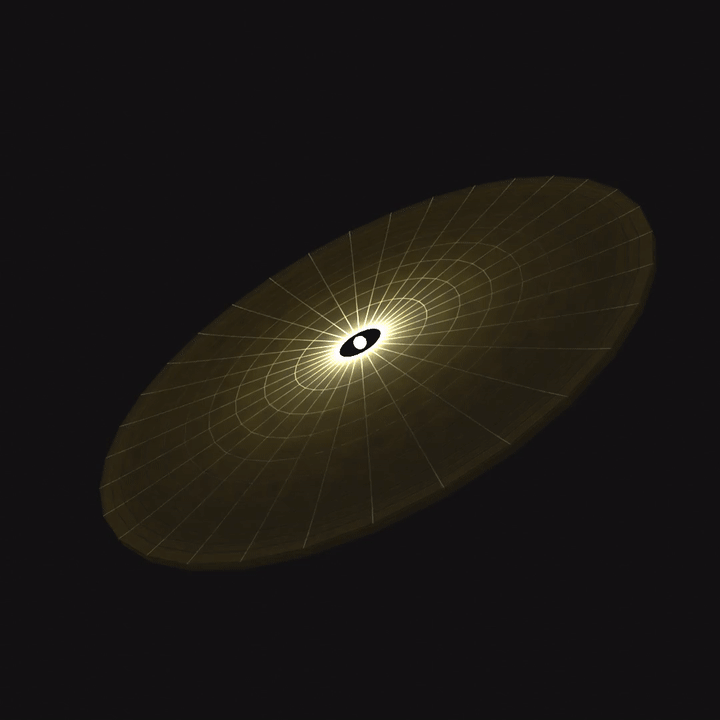A Sphere, a Plane, and the Early Solar System
For my entry into the Summer of Mathematical Exposition, I’d like to talk about an interesting geometrical puzzle I encountered a few years back, the solution to which I only discovered recently. This may not be the most complicated or intricate of entries out there, but I think it would end up in the category of “interesting problems”, those kinds of problems that start with a simple premise and use some unexpected math on the way to the solution.
The puzzle itself is primarily one about geometry, and involves a little bit of calculus as well. My writing for this entry is primarily geared towards those who are already a bit familiar with these topics, but I encourage anyone interested in fun math problems to give this a read, since most of the fun in the problem is really about problem solving, and learning how to take a complex problem and break it down into smaller pieces.
The problem I want to talk about goes like this. Say you have a sphere placed at the origin, and it’s cut right in half by and infinite plane. The exact plane in 3D space isn’t super important, as long as it goes through the center of the sphere.
A sphere and a plane.
Now, pick a point on the sphere and draw out rays uniformly in all directions away from the sphere, as long as the rays don’t go back through and intersect the sphere. Some of these rays will head out and hit the plane, and some others will head off to infinity without hitting anything else. You can imagine this like placing a lightbulb at the selected point, or as a turret that fires outwards in all directions, etc.
“Photon” particles emitted from a point on the sphere. Some particles hit the plane, while others head off into the distance.
The question is:
If you send out all the rays from all of the points on the sphere, what percent of those rays will end up hitting the plane?
What you do feel like it should be? Something low, like 10%? Or maybe higher, like 50%? Think about it, and maybe make a guess before we start.
The answer to this question is surprisingly beautiful. It also has its origins in the cosmos, playing a fundamental role in shaping the environment around newborn stars.
This is the story of a sphere, a plane, and the birth of the solar system.
One Point at a Time
Alright, so where do we start with this problem? We can choose any point on the sphere and any of its rays, so let’s just focus on one point for now. What fraction $f$ of this point’s rays end up hitting the plane, and how does the value of $f$ change as the point moves around the sphere?
Light rays from a sphere. The fraction of light rays hitting the plane changes as the point moves around.
Something you might notice is that whether or not a ray hits the plane is only determined by its vertical motion. For a point on the top half of the sphere, if a ray coming off that point starts off moving downwards, then it has no choice but to eventually run into the plane. On the other hand, if it starts off moving upwards, then it’s always heading away from the plane, and so it runs off to infinity without ever crossing.
The second key fact that we will utilize: points closer to the plane have more rays that intersect. It’s not because the points are closer (remember, the plane is infinite, so the rays will hit eventually as long as they’re aiming in the right direction). Instead, it’s because of the requirement that no rays are allowed to cross back into the sphere. Since the points are sitting on the sphere, they can only aim rays away from the surface. The closer you get to the plane, the steeper the surface is, and the more a point can aim its rays downwards at the plane. Mathematically speaking, the rays must be aimed above the plane tangent to the sphere at their starting point, which is steeper the closer the point is to the equator.
Using a little geometry, you can show that the section of downward-pointing rays covers an angle $\theta$ which is exactly equal to the angle from the north/south pole to the point. (This angle is sometimes called the “polar angle” or “colatitude”.)
Moving a point on the sphere changes its polar angle $\theta$, and the fraction of rays it can aim downwards.
Now we’re getting somewhere! For a point with polar angle $\theta$, the downward pointing (and thus plane-crossing) rays take up an angle $\theta$ out of the $\pi$ radians taken up by all of the rays. In 3D, the downward pointing rays take up a wedge of the entire hemisphere where the rays can be cast, so the fraction of plane-crossing rays from this point is the same, and is simply
$$ f(\theta) = \theta / \pi $$
This expression for $f$ also describes the behavior we saw earlier, that rays were less likely to cross for points higher up on the sphere. Moving a point higher up reduces the value of $\theta$ and $f$ (if the point is at the pole, then $f$ = 0, since rays can only be aimed tangent to the plane at best.) As a point approaches the plane, $\theta$ approaches $90^\circ = \pi/2$, and $f$ approaches $1/2$, since half of the rays can be aimed upwards or downwards.
Now, it may not seem like we’ve made much progress, since all of that was just for one point. But with this simple expression, we can now figure out the value of $f$ for every point on the sphere, by utilizing the power of symmetry!
Each point on the sphere and its mirror point across the plane (that is a point with polar angle $\theta$ and $\pi - \theta$) have the same value of $f$, since you can flip the entire problem over and get the same result. In a similar fashion, all of the points along the sphere at the same height have the same value of $f$, since you can rotate the entire problem along the Z-axis and it would be the same.
A point and its mirror image acorss the plane have the same value of $f$.
Moving points around the sphere does not change their value of $f$.
Combining the Points
Now we approach the crux of the problem; combining the individual ray fractions from each point on the sphere to figure out what fraction of the total rays intersect the plane. The symmetry arguments from above can also help us here. Since the symmetric points are creating the same set of rays twice, hitting the plane with equal fractions, they don’t change the overall fraction of rays for the entire sphere. That means we can “fold” all of the points in the bottom half of the sphere, and ALL of the points around the sphere down into a single quarter circular arc, spanning the polar angles $\theta = 0$ to $\theta = \pi/2$.
Folding the points on the sphere into a circular arc.
We need to combine all of the values along this arc into a single value, so naturally it feels like you should use an integral, maybe something that looks like
$$ F = \int_0^{\pi/2} f(\theta) d\theta = \int_0^{\pi/2} \frac{\theta}{\pi} d\theta $$
but that can’t be completely right, since this expression would just sum up all of the fractions along the arc. This won’t get us the total fraction.
A separate issue, which we haven’t tackled yet, is that because the points are confined to the surface of a sphere, which means the points are not evenly weighted. Points at a constant polar angle $\theta$ trace out a circle parallel to the plane on the sphere, but the size of that circle changes as the points move up and down. The bigger circles have a larger circumference than the smaller ones, and so should be weighted heavier than the smaller circles. If you’ve looked at a globe, you’ve seen this phenomenon in the lines of latitude and longitude; the rectangles get smaller and thinner as you get closer to the poles, even though the lines are evenly spaced.
We can solve both of these problems at the same time by changing our normal integral into a weighted integral. A weighted integral would give the proper geometric weighting for each value of $\theta$, and combine the fractions in a nice, normalized fashion so they don’t add up to some huge number. Weighted integrals are probably a bit less familiar, so let’s talk about how to set them up.
Weighted Integrals
Any school student will begrudgingly tell you that homework assignments and tests are weighted differently. These are pretty common examples of weighted sums, and we can use them to build our intuition for weighted integrals.
Say you have a class that weights its grades as 30% homework, 60% tests, 10% participation, and 5% extra credit. If you want to figure out what your grade is, then you multiply the scores for each category by its percentage weight, and add them up:
$$ S = S_{hw}(0.3) + S_{test}(0.6) + S_{part}(0.1) + S_{ec}(0.05) = \sum S_i w_i $$
Because of the extra credit, it’s possible to get a grade over 100% (that is, the sum can be greater than 1). If we are just concerned about the value out of the total score, including extra credit, we can divide the entire thing by the sum of the weights:
$$ S = \frac{S_{hw}(0.3) + S_{test}(0.6) + S_{part}(0.1) + S_{ec}(0.05)}{(0.3 + 0.6 + 0.1 + 0.05)} = \sum \frac{S_i w_i}{w_i} $$
This equation generalizes smoothly to infinite sums as an integral. If we change the indexed variables to continuous functions, then we get the form of a weighted integral
$$ I = \frac{ \int f(x) w(x) dx }{ \int w(x) dx } ,\ w(x) = \rm{weights} $$
The function $w(x)$ is called the weight function, the continuous version of our individual weights from earlier. Like the discrete case, we multiply our initial function $f(x)$ by the weight function, integrate, then divide by the integral of just the weight function to make sure the values are between 0 and 1.
So, what is the weight function for the points on our sphere? The radius of each circle is equal to the radius of the sphere times $\sin{\theta}$, so $\sin{\theta}$ must be our weight function. (If you’ve taken multivariable calculus, you may recognize $w(\theta)$ - it shows up in the Jacobian for transforming from Cartesian to Spherical coordinates.) Creating our now-weighted integral with the proper weight function, we get:
$$ F = \frac{\int_0^{\pi/2} \frac{\theta}{\pi} \sin{\theta} d\theta}{\int_0^{\pi/2} \sin{\theta} d\theta} $$
which can be solved! I’ll write out the steps below, but if you can, give it a try yourself, since this is really where the “Aha!” moment happens.
$$ F = \frac{\int_0^{\pi/2} \frac{\theta}{\pi} \sin{\theta} d\theta}{\int_0^{\pi/2} \sin{\theta} d\theta} =
\frac{1}{\pi} \frac{\int_0^{\pi/2} \theta \sin{\theta} d\theta}{\int_0^{\pi/2} \sin{\theta} d\theta} $$
$$ = \frac{1}{\pi} \frac{ -\theta\cos{\theta}|_0^{\pi/2} + \int_0^{\pi/2} \cos{\theta} d\theta }{ -\cos{\theta}|_0^{\pi/2} } $$
$$ = \frac{1}{\pi} \frac{ (0 - 0) + \sin{\theta}|_0^{\pi/2} }{ (0 + 1) } $$
$$ = \frac{1}{\pi} \frac{ (1 - 0) }{ 1 } $$
$$ F = \frac{1}{\pi} $$
That’s it. Just $1/\pi$, no extraneous constants or terms attached. It really surprised me how elegant the solution was when I first solved this problem. It reminded me of other mathematically “beautiful” equations, such as Euler’s identity. What also surprised me was the numerical value: $1/\pi \approx 0.318…$, which means just under 1/3 of the rays from the sphere are blocked out by a single plane, even though the rays are aimed in all directions away from the sphere!
It’s possible to test this problem Monte-Carlo style using numerical simulations, picking points on a sphere and casting out rays in random directions to see which ones hit the plane. I put together a simple version and animated it below. I think it creates a nice picture at the end. If you want, you can try the code for it yourself!
Numerical simulation of rays crossing the plane. Rays colored in blue do not intersect the plane, while rays colored in red will intersect the plane. The running total of $f$ is shown in the top right.
The Birth of the Solar System
As mentioned earlier, this problem has its roots in astronomy. In the various nebulae scattered throughout the galaxy, large clouds of gas and dust collapse under their own gravity and form new stars. Lots of material falls inward during this process, and not all of it will collapse directly onto the star. Instead, some of it can fall into orbit around the young star, surrounding it with a large disk than can be tens of billions of miles in radius.
Credit: NASA/JPL-Caltech [Artistic Rendition]
A sphere, and a plane.
The light created from the star streams off in all directions from the stellar surface, and some of it illuminates the disk and heats it up. The amount of stellar light that reaches the disk at each distance determines the temperature of the disk material, which in turn determines the types of elements that are present and eventually make it into the planets that form around the star. (This is why, in broad terms, celestial bodies created closer to the Sun are “rockier”, consisting of elements with high melting points like iron and silicon, and bodies created farther away have more “volatiles”, containing elements with low melting points like ice, water, and ammonia.)
Fluid dynamics within the disk complicates the picture from the mathematical model we learned about earlier. The disk is made of gas, and gas pressure gives the disk a thickness that grows with distance, giving it a bowl-like shape. This “flared” geometry actually means that disks get more light than an infinitely thin plane, since the surface is lifted upwards and can catch more starlight.
Gas pressure causes protoplanetary disks in space to “flare” and expand vertically from a simple plane. The scale of the disk is reduced for visual purposes.
VLT/SPHERE scattered light Image of the IM Lupi protoplanetary disk. The radius of the disk is roughly 330 AU. Credit: ESO/H. Avenhaus et al./DARTT-S collaboration
Final Notes
There are quite a few other questions that this problem can lead to. For example, what happens with different shapes for the “ray emitter” and “ray catcher”? This problem even may connect to questions about probability, such as Bertrand’s paradox.
A few details, both mathematically and astronomically, were skipped over for simplicity. Some of these points, as well as some open questions, are listed below:
Points on the equator $(\theta = \pi/2)$ are ignored, since by definition all of their points would cross the plane $[f(\pi/2) = 1]$. Does ignoring this ring of points affect the final integral? Why or why not?
For numerical simulations, proper calculation of $f$ requires sampling points evenly across the entire sphere. How exactly would you go about this? It might not be as straightforward as you think.
How much light does the real, astrophysical disk capture compared to the mathematical infinite plane? How much of the star’s energy does a disk end up receiving?
How would you extend the symmetry arguments for a sphere with two perpendicular planes? Three? What if the planes aren’t perpendicular?
For now, I think this is a good place to conclude this little story. I hope you’ve enjoyed this intersection of mathematics and astrophysics.
Credits
The inspiration for this project came from Phillip J. Armitage’s “Lecture notes on the formation and early evolution of planetary systems” (available on ArXiv or as a book). The section on radial temperature profile of passive disks is more or less this problem in reverse, i.e. figuring out how many rays hit a certain point on the plane and deposit energy, in order to determine temperature.
Extra thanks to everyone I asked to help with proofreading, double checking the mathematics, and for feedback on the animations!


